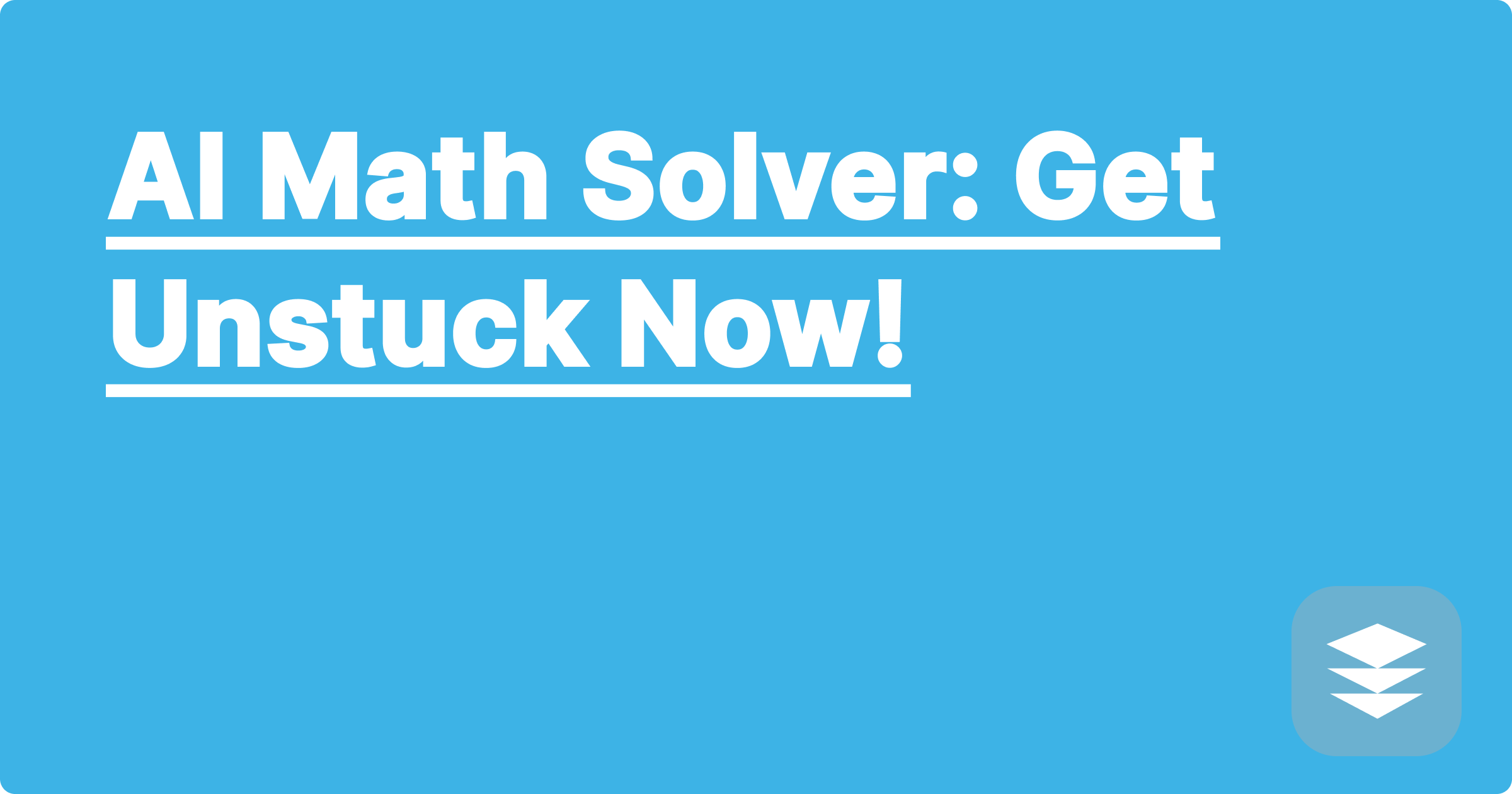
STEM fields are notorious for their challenging mathematical concepts and complex problem-solving. Students and researchers often find themselves spending countless hours grappling with equations, derivations, and data analysis, leading to frustration and hindering progress. Imagine a world where you could effortlessly navigate these mathematical hurdles, freeing up valuable time for deeper exploration and innovation. This is where the power of AI math solvers comes into play, offering a transformative solution to get unstuck and accelerate your STEM journey.
These AI-powered tools are not just calculators; they are intelligent assistants capable of understanding complex mathematical problems, providing step-by-step solutions, and even offering personalized learning experiences. This shift in how we approach mathematical problem-solving has profound implications for STEM education and research. By leveraging AI, students can gain a deeper understanding of concepts, researchers can accelerate their data analysis, and ultimately, the pace of scientific discovery can be significantly increased.
The core challenge in STEM fields often lies in the sheer complexity of mathematical problems. Traditional methods of learning and problem-solving can be time-consuming and often fail to provide the necessary insights for true understanding. Students may struggle to connect theoretical concepts with practical applications, leading to a superficial grasp of the subject matter. Researchers, on the other hand, often face the daunting task of analyzing vast datasets, requiring sophisticated mathematical tools and programming skills. This can create a bottleneck in the research process, delaying progress and limiting the scope of investigation. The lack of readily available, personalized support further exacerbates these challenges, leaving many students and researchers feeling isolated and overwhelmed.
AI math solvers like Wolfram Alpha, Symbolab, and even integrated features within tools like ChatGPT and Google Colab offer a powerful alternative. These tools leverage sophisticated algorithms and machine learning models to tackle a wide range of mathematical problems, from basic algebra to advanced calculus and differential equations. They can not only provide solutions but also explain the underlying concepts and steps involved, fostering a deeper understanding of the subject matter. Furthermore, AI can personalize the learning experience by adapting to individual needs and providing targeted feedback. For researchers, AI-powered data analysis tools can automate complex calculations, visualize data in insightful ways, and even identify patterns and trends that might otherwise be missed. This significantly accelerates the research process, allowing researchers to focus on interpretation and drawing meaningful conclusions.
Let's walk through an example using Wolfram Alpha. Suppose you are struggling with a complex integral. First, you would simply input the integral into Wolfram Alpha's search bar using its natural language processing capabilities. You can type it almost as you would write it on paper. The tool then processes the input, identifies the type of problem, and applies the relevant algorithms to compute the solution. Not only does Wolfram Alpha provide the final answer, but it also shows the intermediate steps involved in the calculation, offering valuable insights into the solution process. Furthermore, it often provides alternative solution methods and related concepts, enriching the learning experience. Similar approaches can be applied to other mathematical problems using tools like Symbolab or by leveraging the computational power of platforms like Google Colab with libraries like NumPy and SciPy.
Consider a physics student trying to model the trajectory of a projectile. Using an AI math solver, they can input the initial conditions, such as velocity and angle, and the tool will calculate the projectile's path, maximum height, and range. It can even generate interactive visualizations of the trajectory, allowing the student to explore different scenarios and gain a deeper understanding of the underlying physics. In chemistry, AI can be used to analyze spectroscopic data, identify chemical compounds, and predict reaction outcomes. For example, inputting spectral data into a specialized AI tool can quickly identify the components of a mixture and their relative concentrations. In biology, AI can be used to analyze DNA sequences, predict protein structures, and model complex biological systems. Imagine inputting a DNA sequence into an AI tool and receiving a predicted protein structure within minutes, accelerating drug discovery and personalized medicine.
To maximize the benefits of AI math solvers, it is crucial to integrate them strategically into your workflow. Don't just rely on them for answers; use them as learning tools. Focus on understanding the solution process and underlying concepts. Experiment with different inputs and scenarios to explore the boundaries of the problem. Furthermore, combine AI tools with traditional learning methods to build a robust understanding of the subject matter. Don't hesitate to use these tools for verification and validation of your own calculations. This can help you identify errors and improve your problem-solving skills. Finally, explore the advanced features of these tools, such as visualization and data analysis capabilities, to gain deeper insights and accelerate your research.
To truly unlock your STEM potential, embrace AI math solvers not just as tools for getting unstuck but as partners in your learning and research journey. By understanding their capabilities and integrating them strategically into your workflow, you can overcome mathematical hurdles, gain deeper insights, and accelerate your progress towards academic and professional success. Start exploring these powerful tools today and witness the transformative impact they can have on your STEM career. Don't be afraid to experiment, ask questions, and discover new ways to leverage AI in your field. The future of STEM is here, and it’s powered by intelligence.
AI Math Solver: Get Unstuck Now!
AI Research Notes: Organize Smart
AI for CAD: Design Smarter, Faster
AI Physics Solver: Get Unstuck Now!
AI Lab Assistant: Data Analysis Made Easy
AI Math Tutor: Conquer Complex Problems
AI for Simulations: Optimize Experiments
AI Chemistry Solver: Ace Your Homework